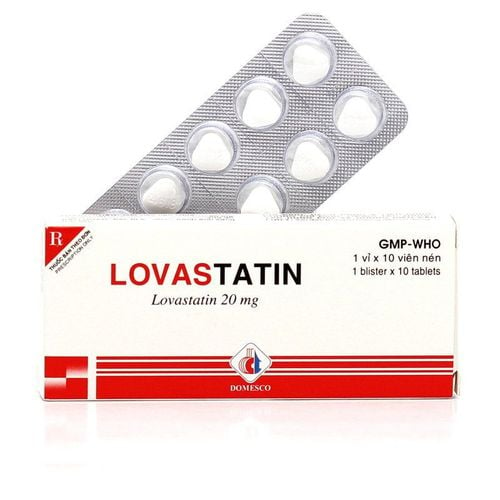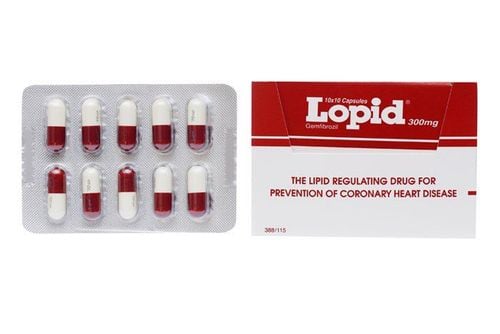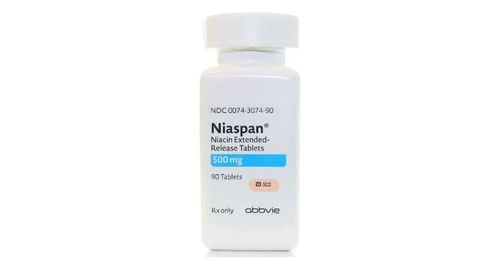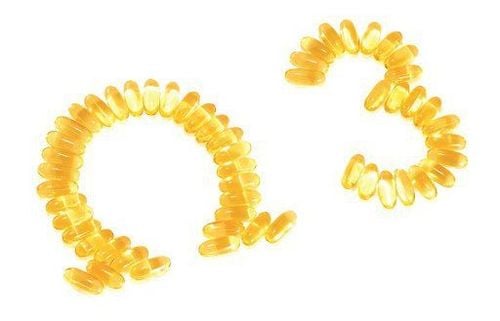This is an automatically translated article.
The body always needs to provide enough nutrients to help people maintain life, exercise and develop in the most comprehensive way. Based on the source of nutrients that food provides, people are divided into 4 groups of important nutrients needed for the body, each stage of development or each person has different energy needs.1. Carbohydrates (also known as carbohydrate groups)
Is the main source of fuel for the central nervous system and energy for the organs in the body to work. Components that make up cells and tissues, regulate body activities, provide necessary fiber. Classification of carbohydrates: Usually divided into 2 types: simple carbohydrates and complex carbohydrates.Simple carbohydrates have a simple structure and are digested and absorbed faster, they are found in foods such as fruits, dairy products, table sugar, candy, soft drinks, syrups... Complex carbohydrates : Slower digestion time. They are found in foods like starchy foods, including: legumes, potatoes, corn, radishes, whole-wheat bread and cereals. How are carbohydrates metabolized in the body? After we eat foods containing carbohydrates, the body will break it down into smaller sugar units that are absorbed into the blood and carried to the liver, where the liver converts these sugars into glucose and used immediately to generate energy. The remainder will be stored as glycogen in the liver and muscles, up to a certain point can not be stored any more, this time carbohydrates will turn into fat. When fasting blood sugar drops, muscle and liver glycogen will be converted into glucose to provide an immediate source of energy for the body to function. When the body consumes more carbohydrates than it needs, the excess carbohydrates will gradually accumulate as fat. On the contrary, if the body is provided with a lack of carbohydrates, the amount of glycogen is depleted, so it must use protein for fuel, then the kidneys will be under pressure and create harmful substances.
For people with high blood pressure, diabetes or at risk of disease, it is recommended to use carbohydrates with a low glycemic index such as whole grains.
2. Protein (or protein)
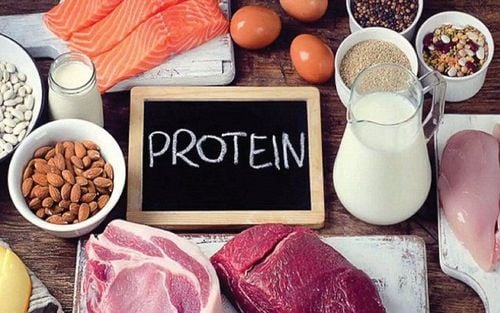
Chất đạm cần thiết để xây dựng và duy trì cơ bắp, máu, da, xương, và các cơ quan tổ chức khác của cơ thể
Protein sources:
Meat, fish, beans, milk and products, eggs. Animal protein contains more essential amino acids, but combining a variety of foods will provide the right combination to get all the amino acids your body needs. Protein is very important to the body, especially growing children. Since breast milk contains the perfect combination of amino acids, mothers should be encouraged to breastfeed their babies and when complementary foods are introduced, they should be fed foods with adequate amounts of protein.
3. Fat
Provides energy, helps absorb fat-soluble vitamins such as vitamins A, D, E, K. The main component of cell membranes and especially nerve cells helps the development of brain cells and nervous system. neurotransmitter, is a component of some hormones such as testosterone, cortisol... Has the effect of providing energy. Fat also makes food preparation more delicious and appealing. Fat structure: Fat is made up of fatty acids, including saturated fatty acids (mainly from animal fats, palm oil, coconut oil) and unsaturated (more in vegetable oils like olive). , sunflower, soybean, fish fat, chicken fat...).Fats come from food including triglycerides and cholesterol, which are absorbed into the body in the small intestine. Cholesterol is synthesized mainly by the liver, in addition from cells and from the food we eat. Cholesterol is a biological substance that has many important functions, but when cholesterol in the blood increases, it increases the risk of atherosclerotic diseases. It was found that when eating foods containing saturated fatty acids, it increases LDL, a substance that transports cholesterol from the blood to the tissues and can accumulate in the vessel walls, causing atherosclerosis. In contrast, unsaturated fatty acids increase High Density Lipoprotein (HDL) that transport cholesterol from tissues to the degraded liver.
Sources: Oils, fats, butters, in the composition of meat, milk, eggs, oilseeds. Prevention and treatment of high blood cholesterol should include a diet to reduce animal fat (butter, fat), increase vegetable oil, eat less meat, increase fish and soy products.
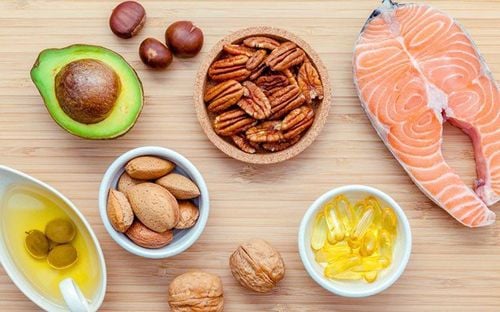
Các thực phẩm giàu chất béo
4. Vitamins and Minerals
Vitamins and minerals, also known as micronutrients, do not produce energy. Micronutrients are substances that the body only needs in a very small amount but have a very important role, when lacking will lead to serious effects for the body, especially young children. The body needs more than 20 vitamins and over 20 essential minerals.4.1. Some essential minerals Iron Iron binds to proteins to form hemoglobin, also known as hemoglobin in red blood cells to transport oxygen throughout the body, and participates in the composition of redox enzymes. Iron-deficiency anemia is a common and can be serious nutritional problem in children and women of childbearing age, leading to reduced productivity, affecting intelligence, growth and development. increased morbidity, increased obstetric complications.
Sources: Iron is abundant in red meat, fish, animal viscera. Iron is also found in legumes and dark green leafy vegetables, but is more difficult to absorb than animal sources. Vitamin C supports the better absorption and use of iron from plant foods.
Calcium and phosphorus Needed to maintain body function and to have healthy bones and teeth. Calcium also participates in other biochemical reactions: blood clotting, muscle contraction, nerve transmission, absorption of vitamin B12, pancreatic enzyme activity in fat digestion...
The diet needs to balance two minerals. This is to ensure good absorption and avoid pulling calcium from the bones, causing rickets in young children.
Sources: Milk and milk products are good, well-balanced sources of calcium and phosphorus. Iodine As a substance needed for normal growth and development, iodine helps the thyroid gland to function normally, preventing goiter and intellectual disability. Fetal iodine deficiency due to maternal iodine deficiency leads to severe consequences such as increased mortality before and after birth, children born with less intelligence, dullness...
Sources: Iodine is present in seafood and foods grown in iodine-rich soil. Currently, iodine is required to be added to table salt to have the necessary amount of iodine for the body.
4.2. Certain vitamins are essential Vitamin A is a fat-soluble vitamin necessary for the building and maintenance of healthy tissues, especially eyes, skin, bones, gastrointestinal and respiratory epithelium. It is also important for immunity. Vitamin A deficiency causes dry eye disease, can cause blindness, slow growth, reduce the body's protective function, and children are susceptible to infections. Vitamin A is found in foods of animal sources such as breast milk, liver, eggs, dairy products, yellow and red vegetables (carrots, turmeric, papaya, mangoes, tomatoes, pumpkins.. ), dark green vegetables that contain many precursors of vitamin A, when ingested, will be converted into vitamin A.
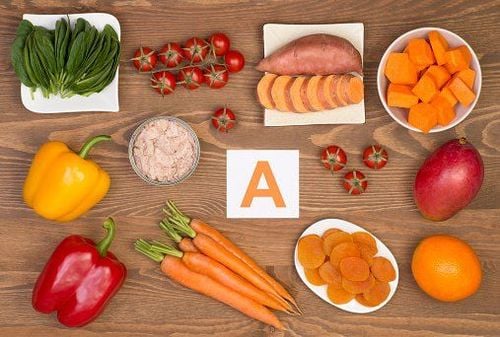
Thực phẩm giàu vitamin A
Foods rich in B vitamins are found in dark green vegetables, beans, peas, peanuts, whole grains, fish and eggs.
Vitamin C Necessary for the absorption of iron from food, participates in the formation of connective tissue and has an antioxidant effect.
Widely found in fresh fruits and vegetables such as citrus fruits (oranges, tangerines, grapefruit, ...), green peppers, strawberries, tomatoes, broccoli, potatoes, sweet potatoes...
Vitamins D Vitamin D helps the body absorb calcium and phosphorus to form and maintain strong bones and teeth. Vitamin D deficiency causes a decrease in bone mineralization leading to rickets in children, and osteoporosis in adults.
Vitamin D is found in fish oil, eggs, milk and a great source of vitamin D that is photosynthesized in the skin by the action of sunlight.
4.3. Water Although it does not belong to any of the above groups of nutrients, water is indispensable and essential for the creation of cells and body fluids, helping chemical reactions to take place and creating urine to expel waste products from the body. body. It is important to ensure that a sufficient amount of clean drinking water is maintained to replace lost fluids.
A suitable diet is knowing the combination of nutrients, providing all 4 groups of essential nutrients for the body.
In addition to the nutrients mentioned above, parents should also add some supporting foods that contain lysine ingredients. Lysine is very necessary for the development of children, helping to promote the production of digestive enzymes to stimulate children to eat better and digest easily and effectively, increase food metabolism, and absorb maximum nutrients. from food. Increasing lysine for babies helps the body create antibodies, develop resistance, help relieve coughs and thin sputum in children.
Parents can learn more:
Why do you need to supplement Lysine for your baby?
Please regularly visit Vinmec.com website and update useful information to take care of your baby and family.
Article referenced source: National Institute of Nutrition




